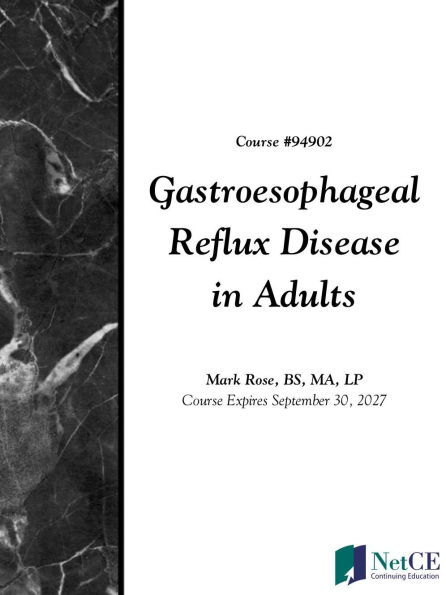Gastroesophageal Reflux Disease in Adults
The purpose of this course is to provide members of the interprofessional healthcare team with the information necessary to appropriately diagnose, treat, and care for patients with GERD. In addition, members of the public may use this course to enhance their personal knowledge of the subject matter presented.
Upon completion of this course, you should be able to:
1. Outline the incidence and prevalence of gastroesophageal reflux disease (GERD).
2. Describe the patient, social, and economic impact of GERD.
3. Identify risk factors for GERD.
4. Review the natural history and pathophysiology of GERD.
5. Appropriately categorize GERD according to underlying pathology.
6. Identify signs and symptoms of GERD.
7. Select appropriate diagnostic tests for patients with suspected GERD.
8. Analyze the pharmacologic treatment of GERD.
9. Outline the treatment options for refractory GERD.
10. Describe surgical options for GERD treatment.
This 10-hour continuing education course is available for download for professional development; if continuing education credit is desired, please see instructions included in eBook.
1129709233
Upon completion of this course, you should be able to:
1. Outline the incidence and prevalence of gastroesophageal reflux disease (GERD).
2. Describe the patient, social, and economic impact of GERD.
3. Identify risk factors for GERD.
4. Review the natural history and pathophysiology of GERD.
5. Appropriately categorize GERD according to underlying pathology.
6. Identify signs and symptoms of GERD.
7. Select appropriate diagnostic tests for patients with suspected GERD.
8. Analyze the pharmacologic treatment of GERD.
9. Outline the treatment options for refractory GERD.
10. Describe surgical options for GERD treatment.
This 10-hour continuing education course is available for download for professional development; if continuing education credit is desired, please see instructions included in eBook.
Gastroesophageal Reflux Disease in Adults
The purpose of this course is to provide members of the interprofessional healthcare team with the information necessary to appropriately diagnose, treat, and care for patients with GERD. In addition, members of the public may use this course to enhance their personal knowledge of the subject matter presented.
Upon completion of this course, you should be able to:
1. Outline the incidence and prevalence of gastroesophageal reflux disease (GERD).
2. Describe the patient, social, and economic impact of GERD.
3. Identify risk factors for GERD.
4. Review the natural history and pathophysiology of GERD.
5. Appropriately categorize GERD according to underlying pathology.
6. Identify signs and symptoms of GERD.
7. Select appropriate diagnostic tests for patients with suspected GERD.
8. Analyze the pharmacologic treatment of GERD.
9. Outline the treatment options for refractory GERD.
10. Describe surgical options for GERD treatment.
This 10-hour continuing education course is available for download for professional development; if continuing education credit is desired, please see instructions included in eBook.
Upon completion of this course, you should be able to:
1. Outline the incidence and prevalence of gastroesophageal reflux disease (GERD).
2. Describe the patient, social, and economic impact of GERD.
3. Identify risk factors for GERD.
4. Review the natural history and pathophysiology of GERD.
5. Appropriately categorize GERD according to underlying pathology.
6. Identify signs and symptoms of GERD.
7. Select appropriate diagnostic tests for patients with suspected GERD.
8. Analyze the pharmacologic treatment of GERD.
9. Outline the treatment options for refractory GERD.
10. Describe surgical options for GERD treatment.
This 10-hour continuing education course is available for download for professional development; if continuing education credit is desired, please see instructions included in eBook.
0.0
In Stock
5
1

Gastroesophageal Reflux Disease in Adults

Gastroesophageal Reflux Disease in Adults
eBook
FREE
Related collections and offers
0.0
In Stock

Product Details
| BN ID: | 2940184747811 |
|---|---|
| Publisher: | NetCE |
| Publication date: | 10/01/2024 |
| Sold by: | Barnes & Noble |
| Format: | eBook |
| File size: | 293 KB |
From the B&N Reads Blog
